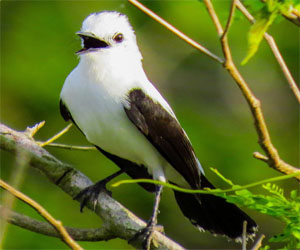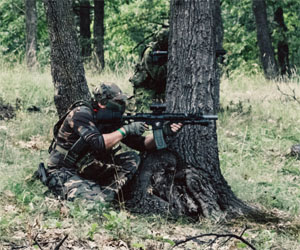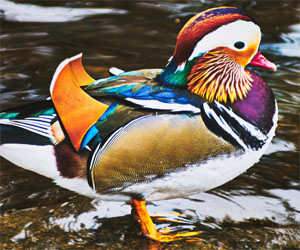



Sports injuries are an unfortunate but common occurrence in the world of athletics. Whether you're a professional athlete or a weekend warrior, injuries can happen. What sets athletes apart is their commitment to recovery and getting back to their sport as quickly and safely as possible. In this article, we will explore the importance of developing a comprehensive recovery plan for sports injuries.
Assess The Injury: The first step in any recovery plan is to assess the injury's severity and type. This may require a medical professional's evaluation. Understanding the extent of the injury helps in tailoring the recovery plan to specific needs.
Rest And Immobilization: In many cases, rest and immobilization are necessary to allow the body to heal. This might involve using crutches, slings, or braces. The duration of rest depends on the injury, but it's crucial not to rush back into physical activity.
Physical Therapy: Physical therapy is often a cornerstone of sports injury recovery. A physical therapist can design a personalized plan to strengthen muscles, improve mobility, and restore functionality. They guide athletes through exercises that target the affected area.
Pain Management: Managing pain is a critical aspect of recovery. This may involve over-the-counter pain relievers or prescribed medications. However, athletes should follow their healthcare provider's advice on pain management to avoid potential risks.
Rehabilitation Exercises: Incorporating rehabilitation exercises into the recovery plan helps in restoring strength and flexibility. These exercises are progressive, gradually increasing in intensity as the injury heals. Athletes should perform them under the supervision of a physical therapist or trainer.
Nutrition And Hydration: A well-balanced diet rich in nutrients is essential for the body's healing process. Adequate protein, vitamins, and minerals support tissue repair and growth. Staying hydrated is equally crucial.
Gradual Return To Activity: Athletes must follow a gradual return-to-sport plan. Rushing back into strenuous activity can lead to reinjury. This plan should be developed with a healthcare provider or trainer and include a step-by-step progression.
Mental Health Support: Injuries can take a toll on an athlete's mental health. Anxiety, depression, and frustration are common emotional responses. Seeking psychological support, such as counseling or sports psychology, can help athletes cope with the emotional challenges of recovery.
Listen To Your Body: The body often sends signals about its readiness to resume normal activity. Athletes should pay close attention to these signals. Pain, discomfort, or reduced performance may indicate that they need more time to recover.
Preventive Measures: Once the athlete is back in action, preventive measures become crucial. This includes proper warm-ups, cool-downs, and injury prevention exercises to reduce the risk of future injuries.
Regular Check-Ups: Follow-up appointments with medical professionals or physical therapists are vital to ensure the injury is healing as expected. Adjustments to the recovery plan can be made based on their recommendations.
A comprehensive recovery plan for sports injuries is essential to ensure athletes regain their full strength and functionality while minimizing the risk of reinjury. This plan should include assessing the injury, rest, physical therapy, pain management, rehabilitation exercises, proper nutrition, a gradual return to activity, and mental health support. Athletes must also remain vigilant, listen to their bodies, and focus on injury prevention to maintain their long-term well-being and performance in their chosen sport. Remember, a well-structured recovery plan is the path to a successful comeback.
Connecting With The Avian World
 Nature As A Classroom: Birdwatching transforms the outdoors into an ever-evolving classroom. Nature lovers cherish the opportunity to learn about the diverse species of birds, their behaviors, and their habitats. Every birdwatching outing is a lesson in biology, ecology, and ornithology, providing valuable insights into the interconnectedness of all living things.
Nature As A Classroom: Birdwatching transforms the outdoors into an ever-evolving classroom. Nature lovers cherish the opportunity to learn about the diverse species of birds, their behaviors, and their habitats. Every birdwatching outing is a lesson in biology, ecology, and ornithology, providing valuable insights into the interconnectedness of all living things.
Deepening Appreciation: For nature lovers, birdwatching deepens their appreciation of the natural world. It allows them to witness the delicate beauty of birds up close, from the iridescent plumage of hummingbirds to the majestic flights of raptors. Observing birds in their habitats unveils the intricate relationships between flora and fauna.
Conservation Ethic: Birdwatching often goes hand in hand with a strong commitment to conservation. Nature lovers are acutely aware of the threats that birds and their habitats face, from habitat destruction to climate change. Their passion drives them to support initiatives aimed at preserving these vital ecosystems.
Embracing Mindfulness: Birdwatching is an exercise in mindfulness, encouraging individuals to be fully present in the moment. Nature lovers savor the tranquil rhythm of birdwatching, which allows them to escape the stresses of daily life and find solace in the natural world.
Ecosystem Exploration: Birdwatching is a journey into the diverse ecosystems that birds inhabit. Nature lovers revel in the opportunity to explore wetlands, forests, grasslands, and coastal areas, where they can connect with the beauty of these pristine landscapes.


Essential Tips For A Safe Fitness Journey
 5. Technique And Form: Proper technique and form are essential to reduce the risk of injuries. Consider working with a fitness coach or personal trainer who can provide guidance and correct your form during exercises.
5. Technique And Form: Proper technique and form are essential to reduce the risk of injuries. Consider working with a fitness coach or personal trainer who can provide guidance and correct your form during exercises.
6. Cross-Training: Diversify your workouts by incorporating cross-training activities. Engaging in different types of exercise can help reduce the risk of overuse injuries and balance muscle development.
7. Listen To Your Body: Your body provides signals, such as pain or discomfort, to alert you to potential issues. Ignoring these signals can lead to injuries. Pay attention and respond accordingly.
8. Stay Hydrated: Dehydration can compromise your physical performance and increase the risk of heat-related illnesses. Be sure to drink enough water before, during, and after your workouts.
9. Proper Nutrition: Fuel your body with the right nutrients to support your fitness goals. A balanced diet that includes a mix of macronutrients, vitamins, and minerals is crucial for performance and recovery.
10. Safety Equipment: Depending on your chosen activity, safety equipment may be necessary. This can include helmets, padding, proper footwear, and other protective gear. Always wear the appropriate safety equipment when required.
Paintball Skill Development
 2. Stealth And Camouflage
2. Stealth And Camouflage
Paintball involves a fair amount of sneaking around and avoiding detection. Developing stealth and camouflage skills is vital for staying concealed and moving quietly on the battlefield. Use natural cover, stay low, and minimize noise to enhance your stealth abilities.
3. Speed And Agility
Paintball requires a level of physical fitness, particularly speed and agility. Quick movement, sharp reflexes, and the ability to change positions rapidly can help you evade opponents and seize advantageous locations. Regular cardiovascular and strength training can enhance your overall fitness.
4. Communication And Teamwork
Effective communication and teamwork are essential for success in paintball. Being able to coordinate with your teammates, share information about enemy positions, and work together seamlessly is a fundamental skill. Practice using radios, hand signals, or verbal cues for clear and timely communication.
5. Tactical Awareness
Understanding the tactics and strategies that apply to different game scenarios is a key paintball skill. Familiarize yourself with a variety of tactics, such as flanking, cover fire, and suppression, and adapt them to your team's objectives and the field's layout.
6. Adaptable Strategy
Developing adaptable strategies is crucial because no two paintball games are the same. The ability to adjust your tactics on the fly in response to the evolving situation is a hallmark of a skilled player.
7. Resource Management
Paintballs are finite resources, and learning to manage them effectively is essential. Don't waste shots unnecessarily, and conserve your ammunition for critical moments.
Finding Peace In The World Of Feathers
 Nature's Tranquil Haven: Birdwatching takes you to some of the most serene and tranquil corners of the natural world. Whether you're perched on a park bench or nestled in the woods, the act of focusing on the sights and sounds of birds creates a connection with nature that calms the mind. The rustling leaves, gentle streams, and melodious bird songs provide a harmonious backdrop for relaxation.
Nature's Tranquil Haven: Birdwatching takes you to some of the most serene and tranquil corners of the natural world. Whether you're perched on a park bench or nestled in the woods, the act of focusing on the sights and sounds of birds creates a connection with nature that calms the mind. The rustling leaves, gentle streams, and melodious bird songs provide a harmonious backdrop for relaxation.
Mindful Presence: Birdwatching encourages a state of mindfulness, where you become fully present in the moment. The act of observing birds requires concentration and patience, allowing you to escape the worries of yesterday and the anxieties of tomorrow. Your focus shifts to the intricate beauty of the avian world unfolding before you.
Stress Reduction: Research has shown that spending time in natural settings, like birdwatching in a park or forest, can significantly reduce stress levels. The gentle rhythm of watching birds, paired with the release of stress-reducing hormones, can lead to a sense of calm and inner peace.
Connection With Wildlife: Birds are our neighbors in the natural world, and watching them up close can foster a deep sense of connection with the environment. This connection not only brings joy but also creates an awareness of the delicate balance of nature, motivating us to protect it.
 The wilderness, with its rugged terrains, towering forests, and untamed landscapes, offers a profound sense of serenity that is often elusive in our daily lives. Reconnecting with the wilderness is not merely a recreational pursuit; it's a transformative experience that allows us to rekindle our connection with nature and rediscover a sense of wonder.
The wilderness, with its rugged terrains, towering forests, and untamed landscapes, offers a profound sense of serenity that is often elusive in our daily lives. Reconnecting with the wilderness is not merely a recreational pursuit; it's a transformative experience that allows us to rekindle our connection with nature and rediscover a sense of wonder.
One of the most enticing aspects of venturing into the wilderness is the opportunity to unplug from the constant barrage of screens, notifications, and the digital noise of modern living. It's a chance to trade in the virtual world for the real one, where we can breathe in the scent of the earth, listen to the songs of birds, and immerse ourselves in the vivid colors and textures of the natural world.
Reconnecting with the wilderness is also about embracing the simplicity of life in the great outdoors. It's a chance to leave behind the complexities of our urban existence and focus on the essentials—shelter, sustenance, and the unadulterated beauty of the wild. As we set up our campsites, gather firewood, and prepare our meals over an open flame, we become attuned to the rhythms of nature and gain a profound appreciation for the resources it provides.
Moreover, this reconnection allows us to rediscover ourselves. Far from the distractions of our screens and the pressures of our daily routines, we find moments of introspection and contemplation. The wilderness invites us to reflect on our dreams, goals, and innermost thoughts.